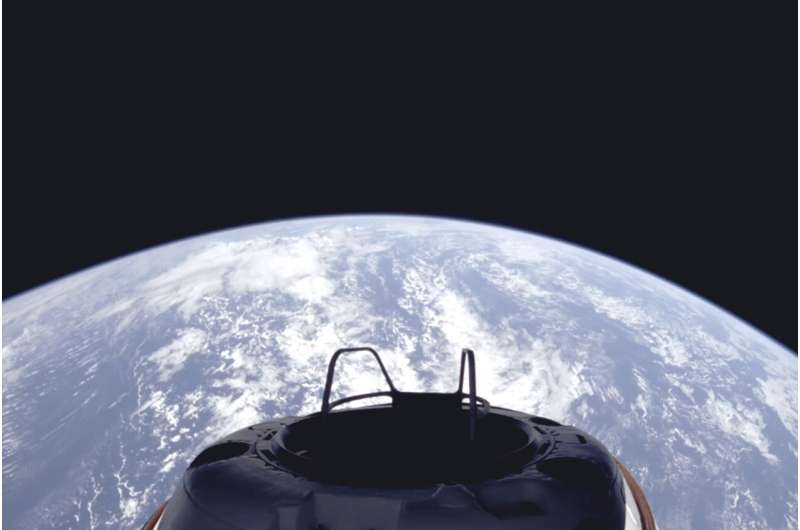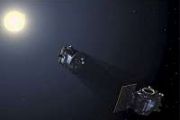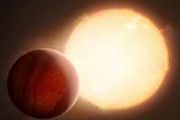
Copernical Team
SpaceX makes history with first spacewalks by private citizens
 A pioneering private crew made history Thursday by performing the first commercial spacewalk, with NASA hailing it as "a giant leap forward" for the space industry.
The SpaceX Polaris Dawn mission, led by fintech billionaire Jared Isaacman, launched Tuesday from the Kennedy Space Center in Florida, journeying deeper into the cosmos than any humans in half a century, since the Apollo era.
A pioneering private crew made history Thursday by performing the first commercial spacewalk, with NASA hailing it as "a giant leap forward" for the space industry.
The SpaceX Polaris Dawn mission, led by fintech billionaire Jared Isaacman, launched Tuesday from the Kennedy Space Center in Florida, journeying deeper into the cosmos than any humans in half a century, since the Apollo era. Astropolitics 3.0: Reality Check
 In the foreword to Astropolitics 3.0: Reality Check, I have the privilege of introducing a work that not only maps the intricate pathways of space exploration but also deciphers the power plays shaping our future in outer space.
Having journeyed alongside Frank through numerous space ventures in the 2000s, I've witnessed firsthand his unique ability to navigate this complex arena.
Ou
In the foreword to Astropolitics 3.0: Reality Check, I have the privilege of introducing a work that not only maps the intricate pathways of space exploration but also deciphers the power plays shaping our future in outer space.
Having journeyed alongside Frank through numerous space ventures in the 2000s, I've witnessed firsthand his unique ability to navigate this complex arena.
Ou NASA to develop lunar time standard for exploration initiatives

NASA will coordinate with U.S. government stakeholders, partners, and international standards organizations to establish a Coordinated Lunar Time (LTC) following a policy directive from the White House in April. The agency's Space Communication and Navigation (SCaN) program is leading efforts on creating a coordinated time, which will enable a future lunar ecosystem that could be scalable to other locations in our solar system.
The lunar time will be determined by a weighted average of atomic clocks at the moon, similar to how scientists calculate Earth's globally recognized Coordinated Universal Time (UTC). Exactly where at the moon is still to be determined, since current analysis indicates that atomic clocks placed at the moon's surface will appear to 'tick' faster by microseconds per day.
Image: Chili flowers bloom in International Space Station

In July 2021, NASA astronauts aboard the International Space Station started growing chili peppers in the Advanced Plant Habitat, as part of the Plant Habitat-04 (PH-04) experiment.
Tech billionaire pulls off first private spacewalk high above Earth

A billionaire stepped out for the first private spacewalk Thursday, teaming up with SpaceX on the daring endeavor hundreds of miles above Earth.
Tech entrepreneur Jared Isaacman and his crew waited until their capsule was depressurized before popping open the hatch. Isaacman emerged first, joining a small elite group of spacewalkers who until now had included only professional astronauts from a dozen countries.
"Back at home, we all have a lot of work to do. But from here, it sure looks like a perfect world," said Isaacman.
The commercial spacewalk was the main focus of the five-day flight financed by Isaacman and Elon Musk's company, and the culmination of years of development geared toward settling Mars and other planets.
Supermoon will soon appear in sky over California—along with partial eclipse: How to watch

Stargazers will be in for a special treat when the next full moon shines over California. A partial lunar eclipse will coincide with a harvest supermoon on Tuesday, Sept. 17.
During the celestial event, the moon will look "slightly larger-than-average," according to Space.com.
What's a harvest moon? A supermoon?
The harvest moon is the name for the full moon that occurs closest to the autumn equinox—considered the official first day of fall.
In 2024, the fall equinox falls on Sunday, Sept. 22.
"Usually, full moon names reflect the time of year they happen," said Time and Date, an online world clock. "True enough, the harvest moon graces the skies in the harvest season in the Northern Hemisphere."
The term "supermoon" refers to when a full moon is orbiting close to Earth.
"During these times, the moon can appear a bit larger in the sky, although the difference can be difficult to notice with the naked eye for most observers," Space.com said.
When will full moon rise in sky above California?
The harvest supermoon will rise at 7:34 p.m.
Ready at Kennedy
 Image:
Unboxing ESA's third European Service Module at NASA's Kennedy Space Center
Image:
Unboxing ESA's third European Service Module at NASA's Kennedy Space Center Webb peers into the Extreme Outer Galaxy
 Image:
Digel Cloud 2S
Image:
Digel Cloud 2S SpaceX Polaris Dawn crew set for historic private spacewalk

A private crew set out on an audacious orbital expedition Tuesday, journeying deeper into the cosmos than any humans in half a century as they prepare for the first ever spacewalk by non-professional astronauts.
The SpaceX Polaris Dawn mission, led by Shift4 Payments CEO Jared Isaacman, launched early morning from the Kennedy Space Center in Florida and attained its peak altitude of 870 miles (1,400 kilometers) later that day.
"Achievement unlocked—apogee 1,400.7 km," SpaceX said on X Tuesday night.
Billionaire's spacewalk with SpaceX delayed several hours hundreds of miles above Earth

A billionaire will have to wait a little longer to perform the first private spacewalk after SpaceX delayed Thursday's spacewalk by a few hours.
Tech entrepreneur Jared Isaacman and his crew began preparing for the endeavor soon after blasting into orbit on Tuesday for a five-day flight. SpaceX announced the postponement an hour ahead of the planned start of the spacewalk.
No explanation was immediately given, but the company said via X "all systems are looking good.
































